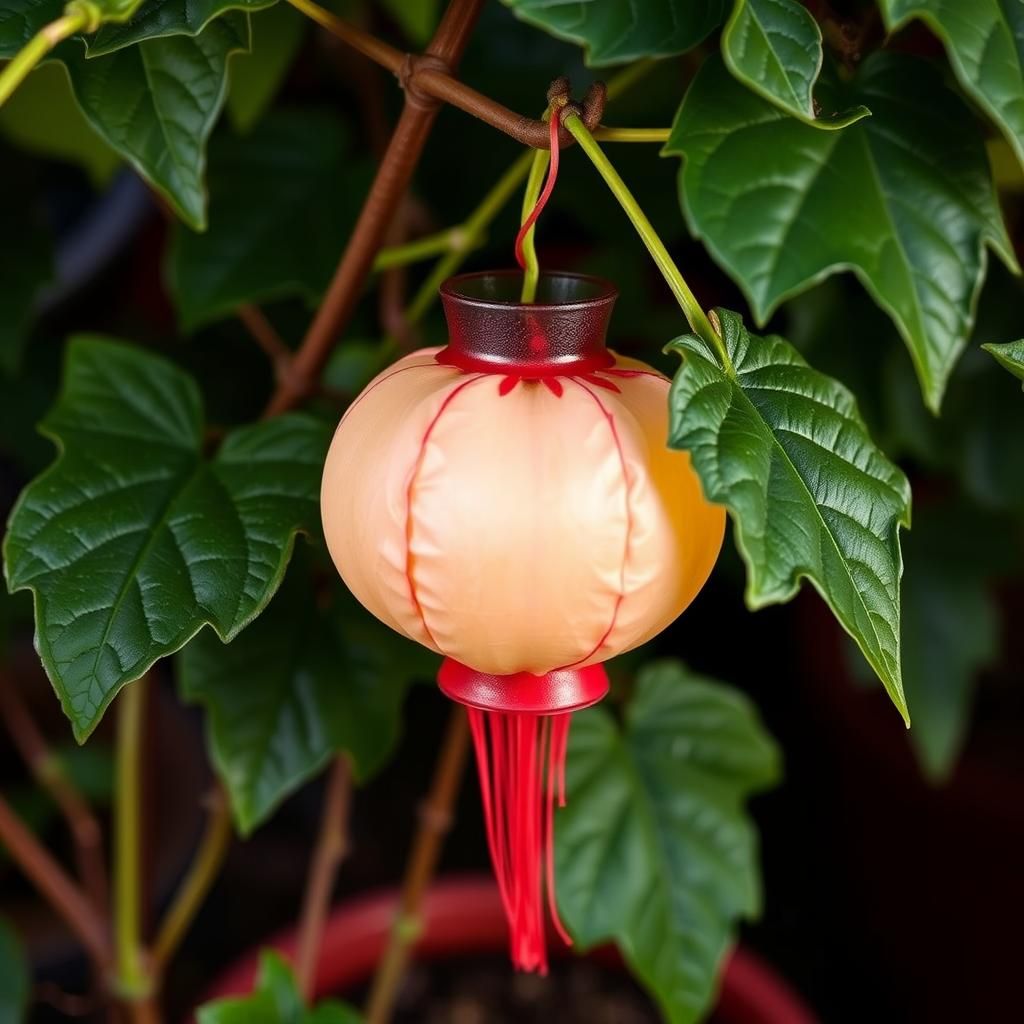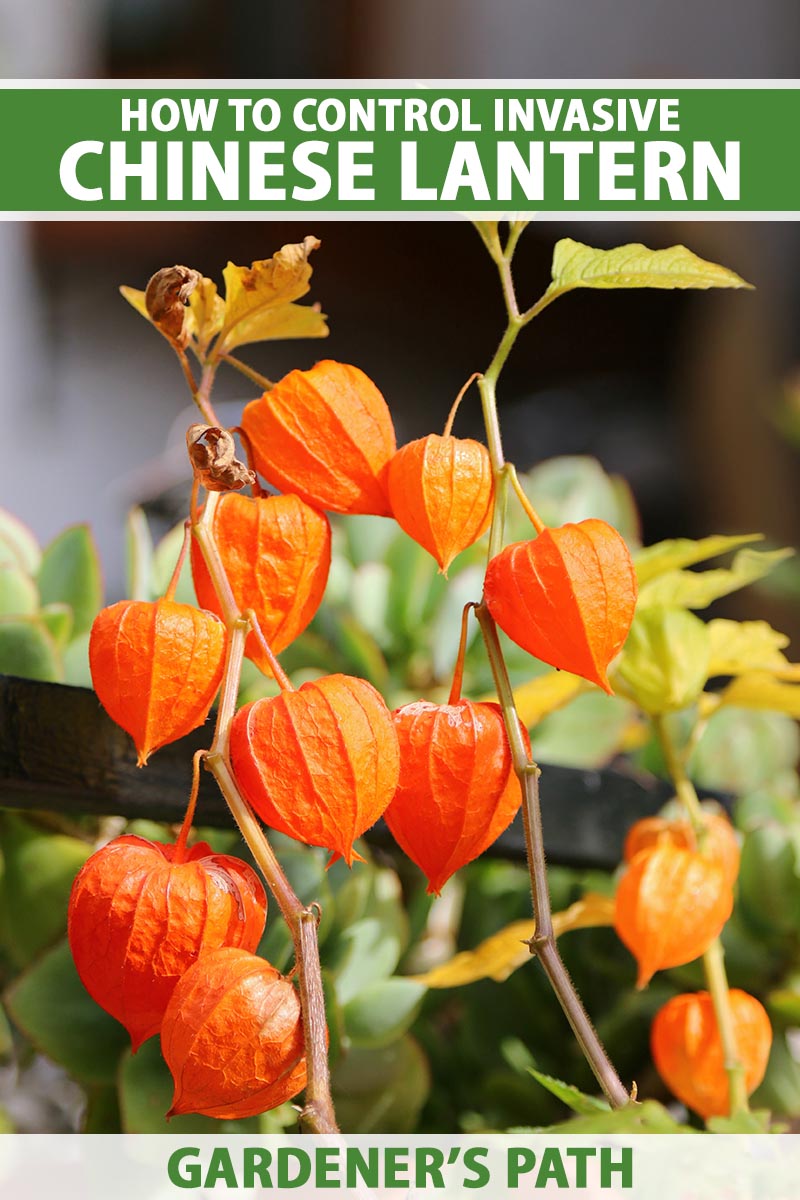Discovering the Chinese Lantern Plant Australia: Care Tips and Growing Conditions

The Chinese Lantern Plant, known for its strikingly vibrant, lantern-shaped husks, is a captivating addition to any garden. Native to Asia, this perennial herb has found a welcoming home in Australia, where its unique appearance and ease of growth appeal to both novice and experienced gardeners. However, to cultivate this enchanting plant successfully, understanding its specific care tips and growing conditions is essential. In this article, we will explore the ideal environment, watering practices, and maintenance strategies needed to ensure your Chinese Lantern Plant thrives, bringing a touch of whimsy and color to your outdoor space.
Understanding the Chinese Lantern Plant in Australia
The Chinese lantern plant (Physalis alkekengi) has gained popularity in Australia for its unique appearance and vibrant orange husks, which resemble lanterns. Often used in ornamental gardens, this plant is not only visually striking but also attracts a variety of pollinators. Native to parts of Asia and Europe, it thrives in Australia's diverse climate but can also become invasive in some regions if not properly managed. Gardeners appreciate it for its hardy nature, as it can tolerate a range of soil conditions, but caution is advised regarding its growth habits to prevent it from overwhelming local flora.
Origin and Habitat
The Chinese lantern plant originates from regions in Asia and Europe. It prefers well-drained soils and can thrive in various ecological zones. In Australia, it is found growing in gardens and sometimes in the wild, particularly in areas where the climate is mildly temperate, allowing it to flourish. The adaptability of this plant to changing environmental conditions contributes to its spread throughout various Australian landscapes.
Growth and Care
Cultivating the Chinese lantern plant requires minimal effort, as it is known for its resilience. It can be grown in sunny spots but appreciates partial shade in hotter climates. Regular watering is essential, especially in dry periods, but overwatering should be avoided. Pruning after the flowering season helps maintain its shape and control its spread. Fertilization is typically not necessary, as this plant can thrive in average soil conditions.
Uses in Landscaping
In landscaping, the Chinese lantern plant is often utilized as an accent plant due to its striking orange husks. These husks, which encase the fruit, provide an unusual visual interest throughout the autumn months. Moreover, they can be used in floral arrangements, bringing a unique texture and color. Its ability to attract pollinators makes it an excellent addition to any garden aiming for biodiversity.
Cultivation Challenges
Despite its beauty, the cultivation of the Chinese lantern plant can present challenges, particularly in managing its growth. The plant can become invasive, leading to competition with native species. Gardeners should monitor its spread and implement containment measures where necessary. Awareness of how it propagates through both seeds and rhizomes is crucial in preventing it from dominating garden spaces.
Health and Toxicity
While the Chinese lantern plant is admired for its aesthetic appeal, caution is warranted due to its toxicity. The fruit and leaves contain solanine, which can be harmful if ingested. It is advisable to keep children and pets away from the plant, as even small amounts can lead to adverse effects. Awareness and education on the plant's properties are vital for safe cultivation and enjoyment.
| Aspect | Details |
|---|---|
| Origin | Asia and Europe |
| Growth Conditions | Well-drained soil, sunlight, partial shade |
| Invasiveness | Can overwhelm local flora if unmanaged |
| Toxicity | Contains solanine, harmful if ingested |
| Uses | Ornamental, floral arrangements |
Do Chinese lantern plants like full sun?
:strip_icc()/Chinese-Lantern-Plant-7K6-nc7K4qzAeIpHiOWpLT-1122bcb043a1482098d4d1a1255d398b.jpg)
Chinese lantern plants, also known as Physalis alkekengi, prefer partial shade to full sun conditions. They thrive well in environments where they receive around 6 hours of sunlight each day, ideally during the morning hours. However, in extremely hot climates, providing some shade during the peak afternoon sun can help prevent the leaves from scorching and the plant from becoming stressed. This balance helps the plant to grow robustly while still producing its distinctive lantern-like fruits. It's essential to monitor the growth and response of the plants to sunlight and adjust accordingly to ensure optimal health.
Optimal Sunlight Exposure
The optimal sunlight exposure for Chinese lantern plants is critical for their development. These plants enjoy bright light, which enables them to photosynthesize effectively. However, overexposure to intense sunlight can lead to dehydration and leaf burn.
- They typically thrive with about 6 hours of direct sunlight.
- Morning sun is preferred as it is less intense.
- In extremely hot regions, a little afternoon shade can be beneficial.
Effects of Too Much Sun
Excessive sunlight can lead to several negative effects on Chinese lantern plants. When exposed to relentless heat, the plants might show signs of stress, such as wilting leaves and reduced fruit production.
- Leaves may turn yellow or brown, indicating burn.
- Flowers may drop prematurely, reducing fruit yield.
- Plants become wilted and may not recover without sufficient shade.
Adaptation to Sunlight Conditions
Chinese lantern plants can adapt to varying sunlight conditions, making them versatile for different garden environments. While they can handle full sun, adjusting the amount of light they receive can optimize their growth.
- Gradual exposure to more light helps acclimate the plant.
- They can grow in a range of light but do best in partial shade.
- Ensuring a well-drained soil aids in coping with intense light.
Watering Considerations in Full Sun
It's crucial to manage watering effectively when Chinese lantern plants are placed in full sun. Increased sunlight means higher evaporation rates, making regular watering essential to sustain healthy growth.
- Water deeply but infrequently to encourage deep root growth.
- Check the soil moisture regularly to avoid drought stress.
- Mulching can help retain soil moisture in full sun conditions.
Choosing the Right Location for Growth
Selecting the right location for planting Chinese lanterns is vital for their overall success. A spot that gets morning sun with some afternoon shade can be ideal for these plants.
See also:
- Evaluate the sunlight patterns in your garden.
- Consider neighboring plants that might provide natural shade.
- Ensure that the chosen location has good airflow to prevent diseases.
Is Chinese lantern plant toxic to touch?

The Chinese lantern plant, scientifically known as Physalis alkekengi, is known for its striking appearance, characterized by bright orange or red husks that resemble lanterns. When it comes to toxicity, it's important to note that while the plant can pose risks when ingested, touching the plant does not typically result in toxicity. However, caution is advised, particularly for individuals with sensitive skin or allergies.
Understanding the Toxicity of Chinese Lantern Plant
The Chinese lantern plant contains compounds called alkaloids, particularly in its leaves and unripe fruits, which can be toxic if ingested. The primary concern is not from touching the plant, but rather from accidentally consuming parts of it.
- It is important to identify the plant correctly and recognize that its berries and foliage can cause gastrointestinal distress.
- Skin contact typically does not provoke a toxic reaction, but some individuals may experience skin irritation.
- Ingestion of even small amounts can lead to symptoms like nausea or vomiting, emphasizing the importance of keeping it out of reach of children and pets.
Symptoms of Poisoning from Ingestion
If someone consumes parts of the Chinese lantern plant, they may experience a variety of symptoms due to its alkaloid content. Recognizing these symptoms can be crucial for safety.
- Nausea and vomiting are common initial symptoms of toxicity.
- Severe cases may lead to dizziness or even hallucinations due to the plant's effect on the nervous system.
- In extreme cases, ingestion can cause serious complications requiring medical attention.
Precautions When Handling the Chinese Lantern Plant
While touching the plant is generally safe, there are specific precautions to consider, especially when handling the leaves and berries.
- Wearing gloves can help avoid any potential skin reactions.
- Be conscious of contact and avoid touching your face after handling the plant.
- Washing hands thoroughly after handling is a good practice to eliminate any residue from the plant.
Potential Skin Reactions
Some people may experience skin reactions upon contact with the Chinese lantern plant, even though these reactions are rare.
- Irritation, such as redness and itching, can occur in sensitive individuals.
- In some cases, contact dermatitis may develop, leading to more prolonged skin issues.
- It is advisable to test for any allergic reactions by handling a small portion of the plant first.
Alternative Names and Cultural Significance
The Chinese lantern plant is also known by other names, which can be useful for further research and understanding its cultural significance.
- Commonly referred to as lantern flower, it is often used in autumn decorations.
- In some cultures, it symbolizes prosperity and vitality, often linked with festivals.
- This plant is part of traditional medicine in various cultures but requires caution due to its toxic parts.
What is the problem with Chinese lantern plants?

The problem with Chinese lantern plants, scientifically known as Physalis alkekengi, primarily stems from their invasive nature and toxicity. While they are visually appealing with their bright orange, lantern-like husks, they can pose several issues in gardens and natural habitats.
Invasive Species Issues
Chinese lantern plants are considered an invasive species in many regions. They can spread rapidly and easily outcompete native plants, disrupting local ecosystems.
- Rapid Growth: They reproduce through both seeds and vegetative means, leading to quick expansions.
- Displacement of Native Flora: Their aggressive growth can overshadow and eliminate native plant species, threatening biodiversity.
- Difficult to Eradicate: Once established, they can be very challenging to manage or remove, requiring persistent effort and effective control strategies.
Toxicity Concerns
The parts of the Chinese lantern plant, especially the unripe fruit, contain alkaloids that are toxic to humans and pets. This poses a risk for those who may come into contact with or consume them.
- Health Risks: Ingestion can lead to symptoms such as nausea, vomiting, and abdominal pain.
- Pet Safety: Animals such as dogs and cats can also suffer from poisoning if they chew on the plant.
- Awareness: Lack of public knowledge about the toxicity can lead to accidental poisonings.
Allergic Reactions
Some individuals may experience allergic reactions upon contact with the plant, leading to skin irritations or respiratory issues.
- Skin Irritation: Contact with the sap or foliage may cause rashes or dermatitis.
- Respiratory Issues: Allergens associated with the plant can trigger asthma attacks or other respiratory complications.
- Pre-Existing Allergies: Those with sensitivities may find their symptoms exacerbated by handling the plant.
Maintenance Challenges
Due to their robust growth and invasive nature, maintenance of gardens with Chinese lantern plants can be quite challenging.
- Frequent Pruning: Regular cutting back is necessary to control their spread, which can be tedious.
- Soil Depletion: They often deplete resources from the soil, which can negatively affect surrounding plant life.
- Management Costs: Extensively managing their growth may lead to higher costs for landscaping and garden upkeep.
Impact on Local Wildlife
While some insects may benefit from Chinese lantern plants, their invasive nature can have the opposite effect on local wildlife.
See also:
- Altered Food Sources: Native pollinators may find it challenging to access food from native plants that are outcompeted.
- Habitat Disruption: Their dominance can disrupt the habitats of other species, leading to a decline in biodiversity.
- Unbalanced Ecosystems: The presence of an invasive species like this can lead to an imbalance in local ecological dynamics.
Where is the best place to plant a Chinese lantern plant?
:strip_icc()/Chinese-Lantern-Plant-BKwaDYar4KA9ZW_YPVloZg-81cfee659311498a89e3fa770b3dfcaf.jpg)
The best place to plant a Chinese lantern plant (Physalis alkekengi) depends on several factors including sunlight, soil type, and space availability. These plants thrive in well-draining soil and prefer areas with ample sunlight. However, they can also tolerate partial shade. When selecting a location, consider the following key aspects to ensure optimal growth and health of the plant.
Sunlight Requirements
The Chinese lantern plant requires a significant amount of sunlight to flourish effectively. Ideally, choose a location that receives:
- Full Sun: At least 6 to 8 hours of direct sunlight daily.
- Partial Shade: If full sun isn’t available, ensure it still receives some direct sunlight during the day.
- Avoid Deep Shade: Deep shade can stunt growth and prevent flowering.
The more sunlight the plant receives, the more vibrant and prolific its lantern-like fruits will be.
Soil Conditions
The soil in which a Chinese lantern plant is planted plays a crucial role in its growth. Opt for:
- Well-draining Soil: Ensure that excess water can drain away to prevent root rot.
- Rich in Organic Matter: Amending the soil with compost can enhance nutrient availability.
- Neutral to Slightly Acidic pH: Aim for a pH level between 6.0 and 7.0 for optimal growth.
Good soil conditions will promote healthy root development and vibrant plant growth.
Spacing and Placement
As a relatively vigorous plant, it's essential to provide adequate spacing for a Chinese lantern plant. Consider the following:
- Spacing: Allow at least 3 to 4 feet of space between each plant to prevent overcrowding.
- Location: Select a spot in the garden where it can spread without restrictions.
- Awareness of Invasiveness: Be mindful, as the plant can be invasive in some regions.
Proper spacing will help the plants to thrive and reduce competition for nutrients.
Climate Considerations
The climate in which you plant the Chinese lantern plant can influence its success. Important factors include:
- Hardiness Zones: Typically thrives in zones 3 to 9.
- Temperature: Prefers moderate temperatures and can suffer in extreme conditions.
- Frost Sensitivity: Protect the plant from frost, especially in colder climates.
Understanding your local climate will guide you in effectively managing the plant's growing conditions.
Pest and Disease Management
Proper placement can help mitigate many common issues associated with the Chinese lantern plant. Ensure:
- Air Circulation: Avoid planting too close to windbreaks to enhance airflow.
- Inspection: Regularly check for pests like aphids or spider mites.
- Fungal Diseases: Monitor for signs of fungal infections due to excess moisture.
Healthy placement and vigilant care can help prevent potential issues that may arise during growth.
Questions from Our Readers
What is the Chinese lantern plant?
The Chinese lantern plant, scientifically known as Physalis alkekengi, is a herbaceous perennial that is notable for its bright orange papery husks, which resemble lanterns. This plant produces small, round berries that are enclosed in these characteristic husks, making it a visually striking addition to gardens and landscapes.
Is the Chinese lantern plant invasive in Australia?
Yes, the Chinese lantern plant is considered invasive in certain regions of Australia. Its aggressive growth can lead to it outcompeting native flora and disrupting local ecosystems. As such, it's important for gardeners to manage its spread and ensure it doesn't take over existing plant populations.
See also:
Can the berries of the Chinese lantern plant be eaten?
While the berries of the Chinese lantern plant are edible when ripe, they can also contain toxic compounds when unripe. It’s crucial to properly identify and prepare them before consumption, as improper handling can lead to adverse health effects. Always consult reliable sources or experts when considering foraging or eating these berries.
How do I care for a Chinese lantern plant in my garden?
Caring for a Chinese lantern plant involves providing well-draining soil and adequate sunlight, ideally in a sunny location. Regular watering is necessary during dry periods, but it's important to avoid waterlogging the roots. Pruning after flowering can help maintain its shape and control its growth habits in the garden.

If you want to read more articles like Discovering the Chinese Lantern Plant Australia: Care Tips and Growing Conditions, we recommend you check out our Planter category.
Leave a Reply
Related Articles